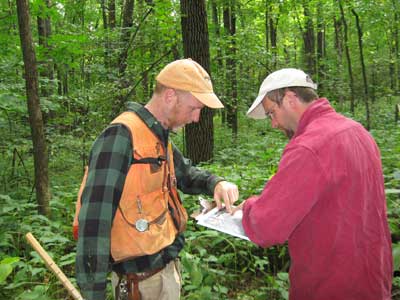Your Boundaries
I’m worried about trespassing. How do I know where my property begins and ends?
Trespass is a near-universal concern of woodland owners and relatively frequent in all its forms. Having confidence in your property boundaries can help you settle disputes arising from trespassing and prevent it in the first place. And yet, too few land transactions involve an up-to-date, professional survey of property boundaries.

There’s a good chance instead that you bought your land based on tax parcel information, past descriptions of the land, remnant fences, old survey records, land use differences (e.g., a neighbor’s agricultural field next to your newly purchased woods), or the seller’s word.
Truthfully, it may not matter. In the end, it’s really about your confidence on matters of property lines.
Why trespassing occurs
Trespass can happen in myriad ways. Hunting, trail building, timber harvests, fence construction, building projects, land use conversion, access, cost-share contracts – many activities can cross property lines.
Though you are not legally required to post your property boundary in Wisconsin (unless your property is adjacent to public lands), lacking the confidence to know where you would draw the line may expose you to trespass.
It is also true that posting property boundaries will not eliminate all trespass or that posted lines should be assumed to be correct. Regardless, your confidence in the location of the property line is critical if issues or disputes arise.
Options for delineating boundaries
Beyond a full-blown, professional survey, a number of options exist for knowing your property boundaries. One is to ask a professional to locate particular parcel corners or government markers to establish your basic level of understanding.
Another strategy is to focus on boundaries that seem uncertain. For example, a recent land division could create separately owned parcels that are indistinguishable because of identical land use histories.
Yet another possibility is to allow circumstances to trigger a land survey. A timber harvest, yours or the neighbor’s, could be a well-timed moment to acquire definitive boundary locations. The saying “good fences make good neighbors” is really about tearing down assumptions between neighbors about where the boundaries are.
